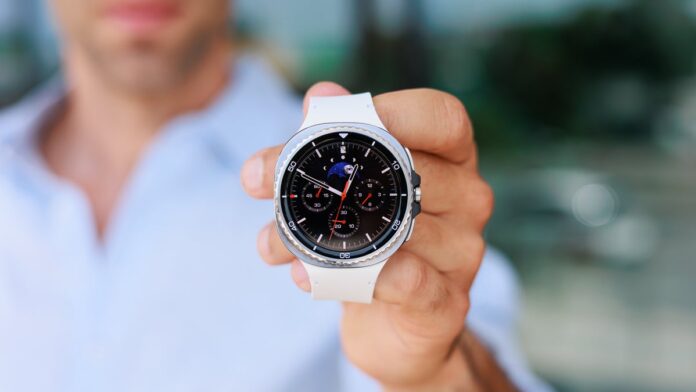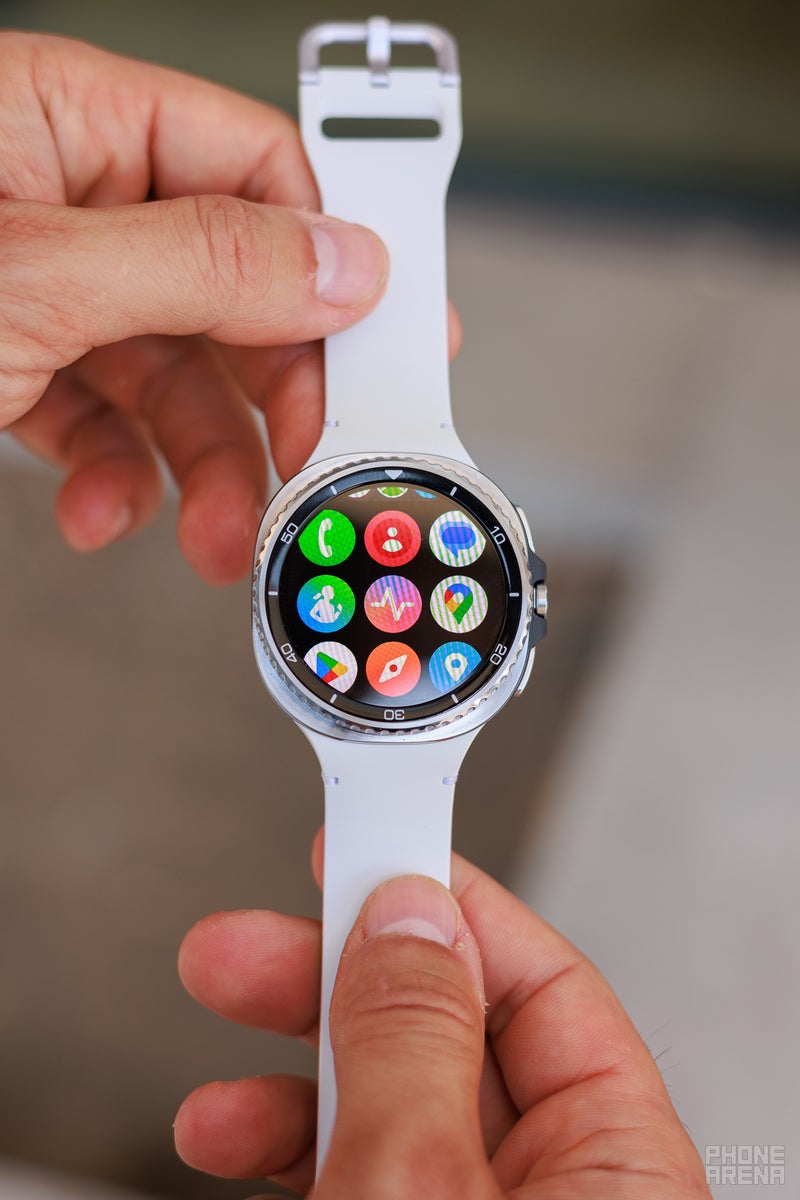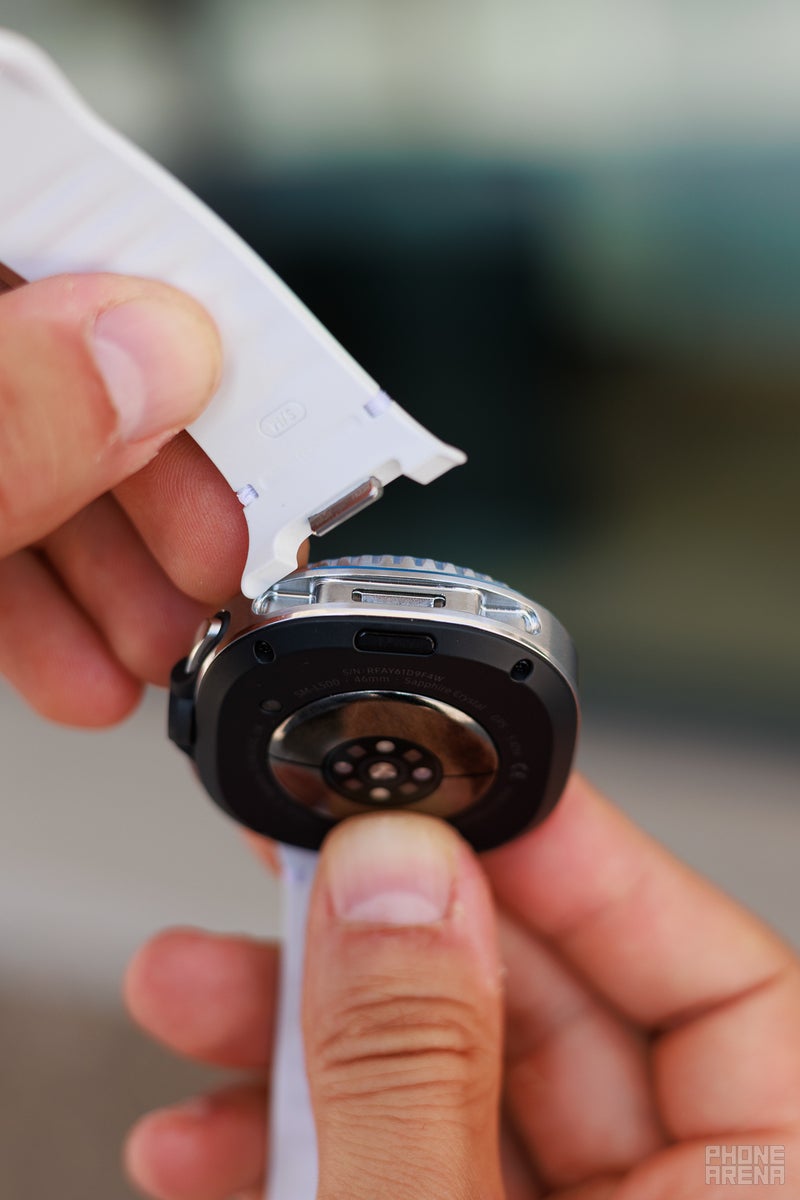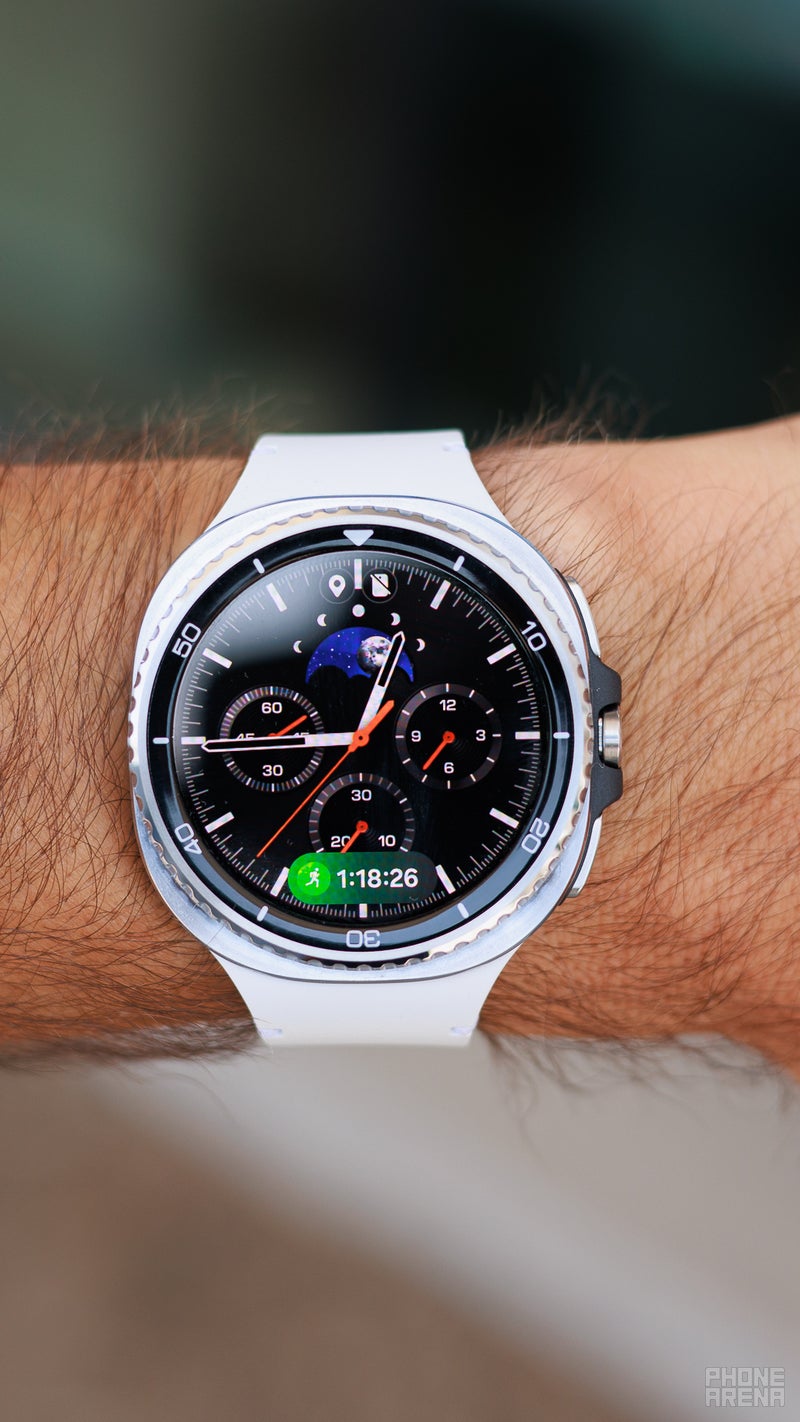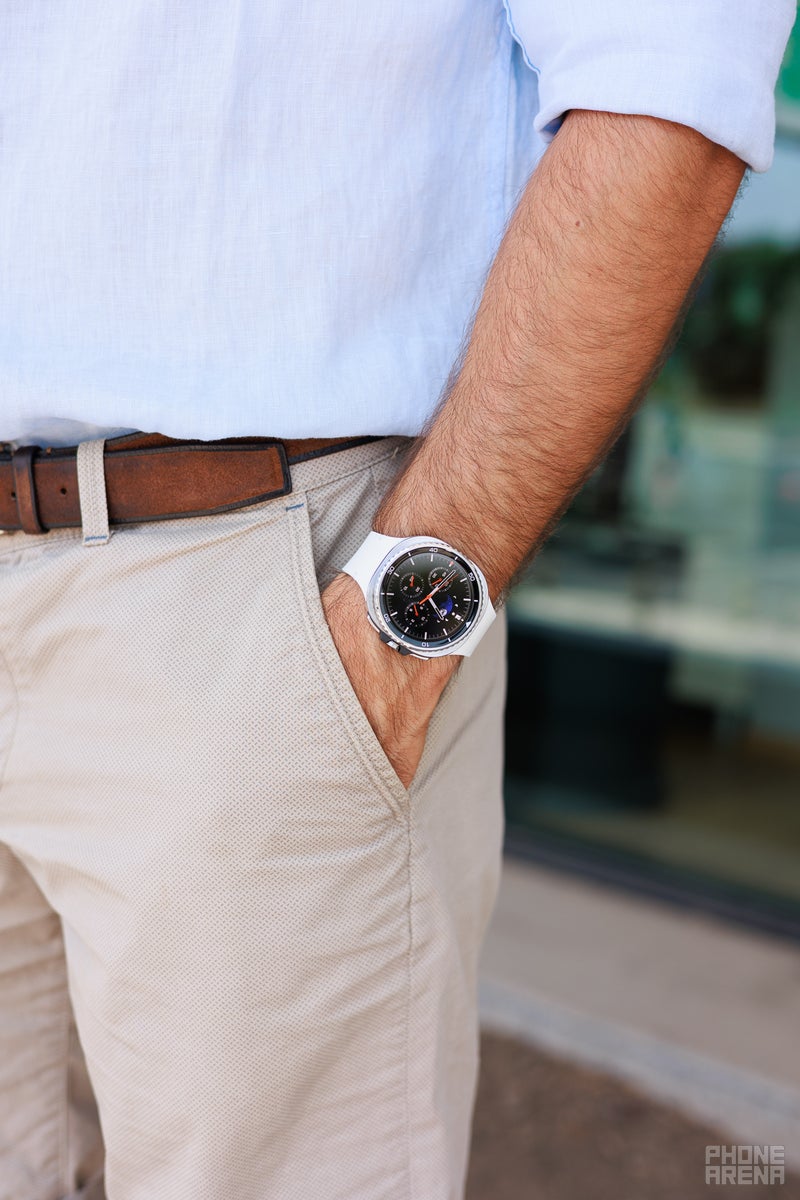Samsung releases new smartwatches every summer, but its most beloved ones with a “Classic” design and a rotating bezel only come out once every two years.
Previous Classic editions of the Galaxy Watch came in two sizes, but this year, we only have one, a 46mm version, a bit on the larger side and probably a bit too big for smaller wrists (sorry, ladies).
As far as functionality goes, it’s the same as the regular Watch 8 model, meaning you get Wear OS 6 with the wonderful addition of the Gemini smart assistant. There are also some new health features like Bedtime Guidance, Running Coach and for the first time on any smartwatch – an antioxidant index.
After using it for a few days, we can say that Galaxy Watch 8 Classic feels more refined than ever. Let us explain.
Galaxy Watch 8 Classic key features
- Exynos W1000 processor (same as Galaxy Watch 7)
- 64GB storage
- Gemini on board
- Same BioActive sensor as Watch 7
- New health metrics like bedtime guidance and antioxidant index
- New fitness metrics like running coach
- Same battery life and charging speeds
- Comes in only one size (46mm)
- Pricier, now from $500
Table of Contents:
Design & Sizes
The bezel feels nice and clicky
We already mentioned that it comes in just one, big-gish size: 46mm. The 6 Classic came in a 43mm and 47mm flavors, so the smaller model is missing.
This is a good place to also mention the non-Classic Watch 8 model. With no need for a rotating bezel on that model, it’s significantly thinner and lighter, so for those who are not absolutely certain they need the bezel, it’s worth taking a look at the vanilla version. The benefits of a light-weight watch are under-rated!
The Watch 8 Classic also get a neat upgrade in peak brightness — it can now hit 3,000 nits outdoors in the sun, up from 2,000 nits on previous models. This is on par with the best watches out there and makes seeing the screen on a sunny day much easier.
We also get an IP68 rating and 5ATM rating. What does this mean? You can swim with the watch, but diving is not advised. For that, you’d need to go to the Galaxy Watch Ultra, which is even tougher (but heavier too).
Bands
The Galaxy Watch 7 inherits the band-latch mechanism from the previous model. You have a button that you press to release the strap and then reattach it again. It’s simple enough, but if you’ve trimmed your nails a bit more you might have trouble pressing that button. Good news is that you can still use standard 20mm straps with spring bars.
The Watch 7 comes with a selection of new, colorful Ripple bands. We like the attention to detail and loved the provided sporty strap. The green color was nice and not boring with the stitching on the side, plus it seems extra durable.
Software & Features
Wear OS with a Samsung twist
Everything here looks nice, animations are smooth, and the software mostly stays out of your way.
After using the Pixel Watch and a few others, we have to mention just how wonderful it is that the Samsung Health app is completely free to use. No asterisks, no monthly subscriptions. Compare that to Google’s Fitbit app, which has taken to paywalling useful data.
But the real star this year? Gemini. Yes, that Gemini. On your wrist. It’s as cool as it sounds, but keep in mind that it will work when your watch is connected to Wi-Fi or LTE. Otherwise, you’ll need to drag your phone along for the ride.
So, what can you actually do with Gemini from your wrist? You can ask it questions, anything from “How far to Mars?” to “What’s the best pizza in Philadelphia?” and it will answer right on that lovely round screen you have. One thing to know: it will not whip up custom training plans for you just yet. It’s smart, but it has not yet transformed into a personal coach.
GPS, Heart Rate (HR) sensor and Workouts
In our tests (consisting of sweaty runs and the occasional brisk walk), heart rate accuracy was solid. Meaning, it was mostly in line with readings we get from an Apple Watch or Garmin’s finest.
Then there’s the automatic workout detection, which might just be the best we’ve ever seen on a smartwatch. You start walking and boom — the Watch 8 knows. Hop on a bike, look at your wrist and the workout is already going. It’s almost eerie, in a good way.
Dual-band GPS is still here, as it should be. If you live in a city full of tall signal-scrambling buildings, this is the feature you need. Route accuracy was spot-on in our testing.
And let’s take a moment to applaud Samsung’s workout summaries. All your stats are cleanly laid out, explained like someone actually wanted you to understand them. Nice!
Sleep Tracking and Energy Score
To be fair, Samsung’s been on its sleep game for a while. Previous models could already track your REM, SpO2, temperature, even snoring (with your phone on the night stand). And from the Watch 7 onward, there’s sleep apnea detection too.
Sleep reports are in-depth without being overwhelming: sleep stages, apnea red flags and now (most usefulle!) a suggested bedtime window based on your recent patterns. As someone having troubles falling asleep lately, I appreciated this.
Antioxidant index
Then comes the result. It slots you into one of three vague categories. But here’s the twist: out of five testers, everyone landed in “low.” Either we’re all woefully lacking in spinach, or the scale’s a bit… off. Worse still, try it twice in a row and you might get two different numbers.
The post-scan advice is where I started losing faith in this feature. Basically, you need to check your phone for dietary suggestions, which, amounted to: “eat more veggies.” Don’t we all know that already? With such vague advice, I doubt many people would bother measuring their antioxidant levels regularly.
Samsung also admits this antioxidant reading hasn’t been clinically validated, so think of it less as a diagnosis and more like a nudge from a friend.
If this rings a bell, it’s because Samsung used the same playbook for last year’s AGEs index, another flashy acronym aimed to help you understand your biological aging based on lifestyle choices. What it actually measures? Still a bit of a mystery (and do let me know if you know someone who actually measures this regularly).
The Watch 8 Classic still keeps the old faithfuls around: ECG, blood pressure monitoring, and the rest. Blood pressure is still a no-show on the competition like Apple Watches, but honestly, if you’re serious about tracking it, an actual cuff is still your best bet.
Battery and Charging
The battery in the Galaxy Watch 8 Classic is a bit bigger than before. It’s a 445 mAh battery, up from a 425 mAh one on the Watch 6 Classic 47mm. Should we really care about a 5% increase in battery size? It’s nice to have, but it does not change the equation in any meaningful way.
Compared to the Watch 6 Classic, though, here you get a new and more efficient Samsung W1000 chip, so that should help a bit with efficiency.
The battery numbers by Samsung, however, remain unchanged. Both the new and older classic models get the same 30 hours battery life estimate with the always-on option enabled and 40 hours if you turn it off. In other words, you have to charge the Galaxy Watch 8 Classic every single day (okay, day and a half).
PhoneArena Smartwatch Charging Test
| Model | 30 mins charge (% charged) |
Full charge (time) |
|---|---|---|
| Galaxy Watch 8 (40mm) | 45% | 1 hour 19 minutes |
| Galaxy Watch 8 Classic | 41% | 1 hour 24 minutes |
| Galaxy Watch Ultra | 36% | 1 hour 48 minutes |
| Apple Watch Series 10 (46mm) | 50% | 1 hour 13 minutes |
| Google Pixel Watch 3 (45mm) | 50% | 1 hour 23 minutes |
| OnePlus Watch 3 (46mm) | 80% | 47 minutes |
There are no changes to charging speeds either, which is disappointing considering that the Apple Watch and Pixel Watch both charge faster. And don’t even mention the OnePlus Watch 3 series which is lightning fast to charge.
In this chapter we have to once again say that the Galaxy Watch 8 Classic only comes in one large 46mm size. There is no small version of this watch (like there used to be for the Watch 6 Classic).
Sadly, Samsung has also bumped the price by $100, which is quite a bit for a smartwatch:
- Galaxy Watch 8 (40mm): $500 Wi-Fi only; $550 for Wi-Fi + Cellular
So what exactly did Samsung change with the Galaxy Watch 8 Classic?
Apart from a few niche health features, this is mostly about refreshing the design and style, and we think this new design is mostly a success. What we don’t quite get is what has justified the steep $100 price increase, bringing the starting price of the Watch 8 Classic to $500.
The other annoying detail is the never-changing battery situation on Galaxy smartwatched (really, on most major smartwatches). Having to charge this watch daily is a chore. We could occasionally squeeze a day and a half of use, but two days would be a stretch.
We do like the additional third button, we like the style and fit, and we like how smooth and refined Wear OS now feels. And the Watch 8 Classic remains the only watch with such elegance and the convenience of a rotating bezel. You should absolutely get if that’s what you’re after, we are just not so sure owners of previous Classic watches have much reason to upgrade.
👇Follow more 👇
👉 bdphone.com
👉 ultractivation.com
👉 trainingreferral.com
👉 shaplafood.com
👉 bangladeshi.help
👉 www.forexdhaka.com
👉 uncommunication.com
👉 ultra-sim.com
👉 forexdhaka.com
👉 ultrafxfund.com
👉 bdphoneonline.com
👉 dailyadvice.us
